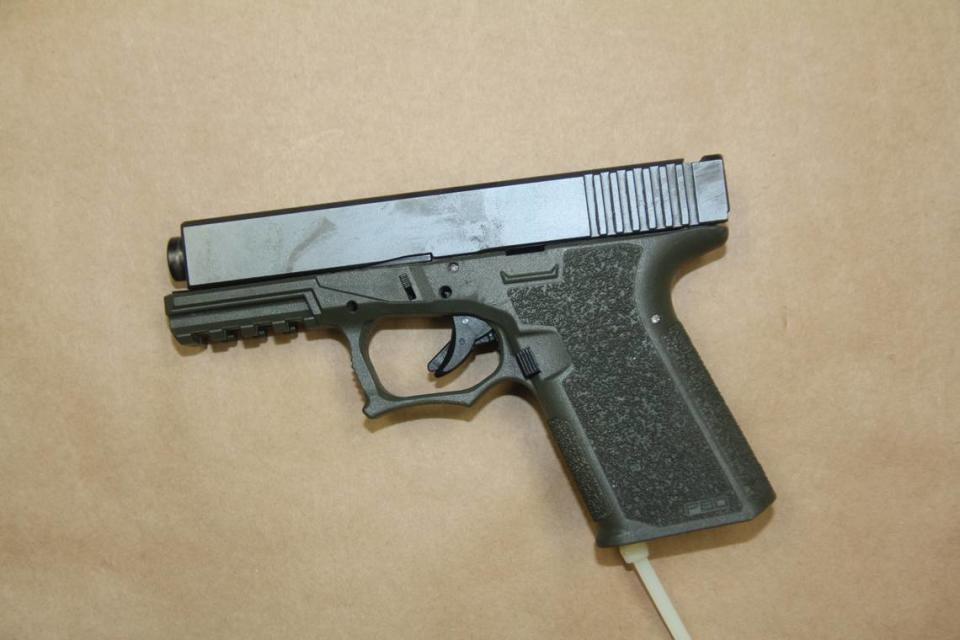Criminal case dropped against Hialeah teen who fatally shot pal while ‘simulating’ rap video
Prosecutors have dropped the manslaughter case against an 18-year-old who accidentally shot and killed his friend in Hialeah while he was “simulating a rap video” for a Snapchat post.
The state on Friday declined to file the charge against Jonathan Batista, who had been been arrested for the Oct. 22 death of Brian Shakur Meridor, 18.
The reason: the Glock pistol had been modified, and the teen said he didn’t think it worked. In reality, the modification made the weapon dangerously defective and it likely fired without the teen even pulling the trigger.
“The gun is very unsafe, and there is nothing about the defect that would be obvious to the untrained user,” Assistant State Attorney Sara Imm wrote in her final memo on the case.
The prosecutor wrote that because the state could not prove Batista pulled the trigger, his conduct “does not rise to the level of culpable negligence required to prove manslaughter.”
Batista’s defense lawyer, Eric Matheny, in a statement, thanked Hialeah police and prosecutors for probing further.
“The firearm was presumed to be inoperable. It was meant to be a prop,” Matheny said. “Nobody thought it was capable of discharging a projectile.”
Matheny added: “Again, this was a tragic accident. But from a legal perspective, a criminal charge of manslaughter was not appropriate in this instance.”
Meridor’s death was one of a slew of accidental fatal shootings involving young people in Miami-Dade County this year.

Among them: the death of a 15-year-old Miami Beach High freshman Arya Gray, and 17-year-old Giselle Rengifo in Miami. The two young men charged in those cases are still awaiting trial for manslaughter with a deadly weapon.
In the Batista case, the fact pattern diverged because of the dangerous modification made to the Glock.
Batista, Meridor and another teen, Andres Otiza, all close friends, had been living together at the Hialeah apartment. They had handled guns before and “had a history of playing around with firearms,” the memo said.
Otiza had purchased the weapon from an “unidentified party” a few months before. (The gun was actually reported stolen from Broward County. Otiza had faced a weapons charge, but it too was dismissed.)
Batista was playing music and making the video for Snapchat, the social-media app, when he picked up the Glock that was “laying out in the open and began to waive it in the air to the beat of the music as if he was dancing.” He told police he didn’t know the gun was loaded “and “intended only to use the gun as a prop in his video,” Imm wrote.
He held the gun with his arm outstretched and was lowering it when it fired — hitting Meridor square in the chest.
Otiza called 911. When Hialeah cops arrived, the teens were trying to help Meridor. Batista “spontaneously” told an officer that “he didn’t mean to shoot the victim and that the gun wasn’t supposed to work,” according to an arrest report.
Hialeah police soon arrested him for manslaughter with a deadly weapon.
The gun was sent to the Miami-Dade Police crime lab. Before Otiza bought it, somebody had reconfigured the Glock and placed its barrel into a different “polymer frame,” which is designed to make the weapon lighter and sleeker. But the gun didn’t fit in the frame, a weapons expert found, and was “missing several parts.”
Believing the gun didn’t work, Otiza had tried fixing the Glock a month before the shooting. But he had not test fired it to see if actually worked, the memo said.
It did work — but not safely, a Miami-Dade police firearms expert found. In the lab, the gun fired when the expert was “merely cocking the slide as she prepared to test fire it.”
“After careful examination, it was the opinion of examiner that it was physically possible for this gun to fire without anyone pulling the trigger,” Imm wrote. “Specifically, the act of swinging or flicking the gun was enough to allow gravity to pull the slide and trigger the firing pin.”

